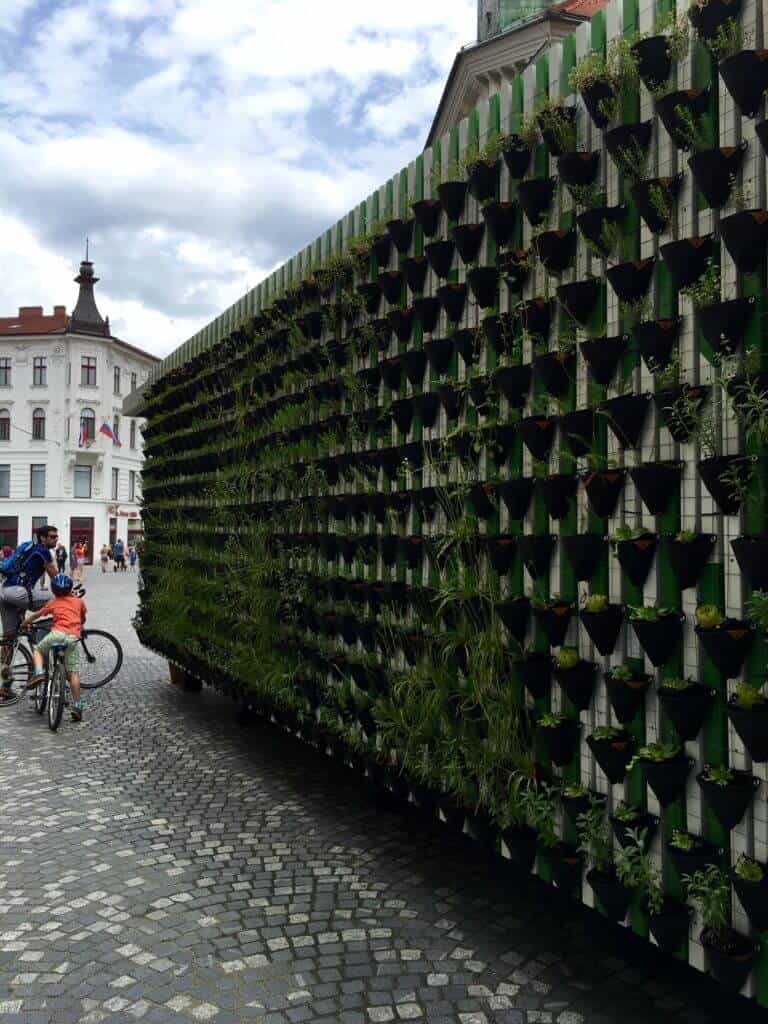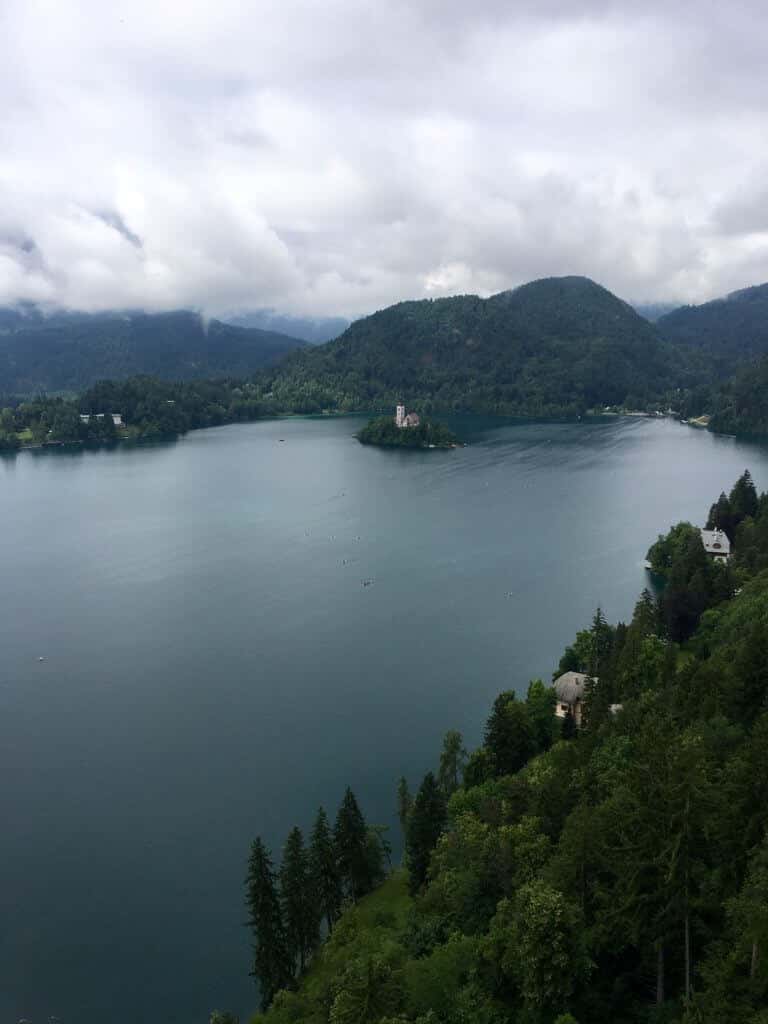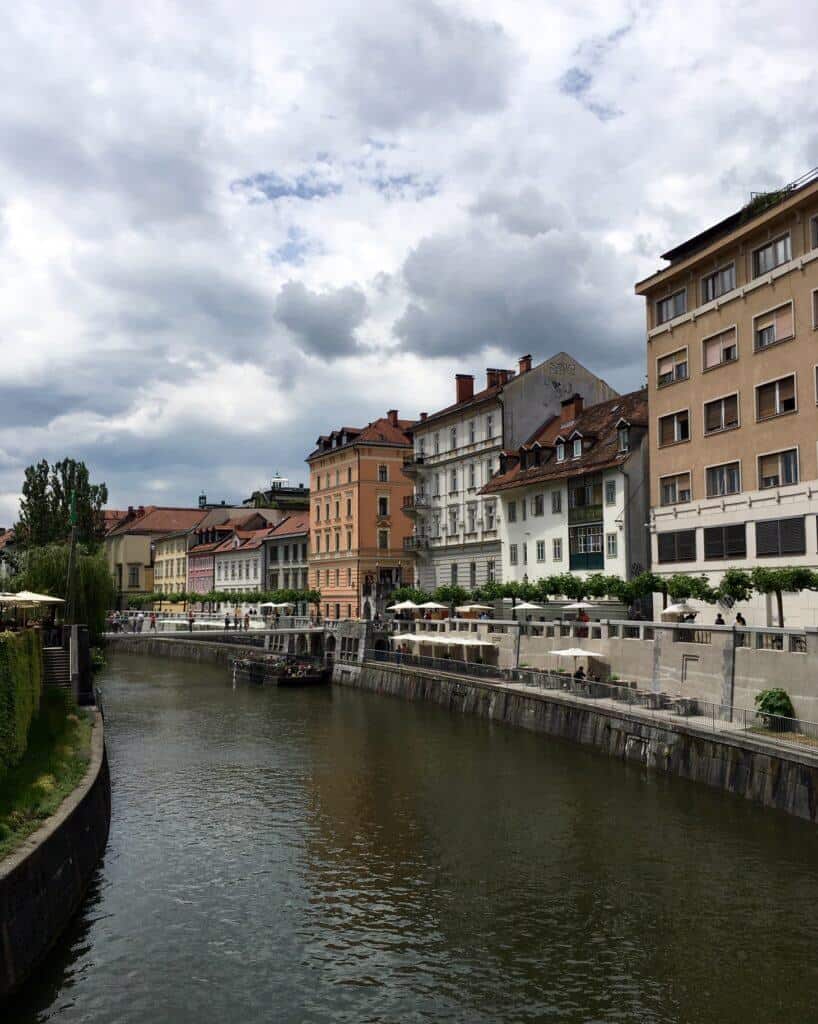Ljubljana is not exactly ‘undiscovered,’ but it’s far less known than nearby tourist darlings, Dubrovnik and Zagreb in Croatia and Mostar in Bosnia.
Many cities in Europe captivate with ancient cobblestoned streets, waterways coursing past colorful historical buildings, vibrant multicultural influences and, nearby, beautiful natural landscapes, ranging from shimmering coastlines to castle-dotted hilltops. Given their allure, it’s no surprise that these cities attract hordes of visitors. But dealing with them can put a dent in the travel experience. If you prefer to visit a city with all the charms of other popular European destinations without the crush of crowds, head to unsung Ljubljana, the small and lovely capital of Slovenia, located in the heart of the continent.
Ljubljana is not exactly ‘undiscovered,’ but it’s far less known than nearby tourist darlings, Dubrovnik and Zagreb in Croatia and Mostar in Bosnia. And yet, it’s no less dazzling. I spent a few days in Ljubljana while traveling through Croatia, Montenegro, Bosnia/Herzegovina and Slovenia and was blown away by just how under-the-radar this lovely gem is—it’s truly one of my all-time favorite cities.



A Rare Combination of Old and New
Ljubljana is part of a territory with a history that spans many centuries, and telltale signs of its rich and storied past can be found everywhere one looks, from the distinctive Baroque and classical Grecian-style architecture to the 19th-century bridges that cross over the winding Ljubljanica river to the medieval Old Town and its majestic views of towering Ljubljana Castle.
The ancient territory that Slovenia occupies was part of the Roman Empire, underwent Barbarian Incursions, experienced Hapsburg rule, endured Ottoman-Habsburg wars, participated in the cultural explosion of the 17th century, was included in the Austro-Hungarian Empire and federal Yugoslavia until, in 1991, an independent nation with a lively capital took shape.
However much it’s been imprinted by the historical forces that shaped the region, Ljubljana is very much a modern city with a beautiful layout created by world-renowned architect Jože Plečnik and a notably green character—in fact, the city won the European Green Capital Award for 2016. It also offers top art museums; great shopping destinations; and bustling, beautifully maintained town squares where you’re just as likely to see local kids chasing bubbles as tourists snapping Instagram shots. And, Ljubljana is a culinary hotspot with many acclaimed fine dining spots, great local wines and dozens of outdoor cafes along the river that make for idyllic lounge-and-linger spots—settle down at one and you’ll likely find yourself torn between continuing your explorations or staying put to listen to the street musicians.
Atmosphere, Culture and Cuisine
One thing you’ll notice immediately is that the population of this city of 300,000 is quite international and many residents both understand and speak English quite well. Of course, they’ll still appreciate any effort you make to speak Slovene, the native language. Here are some expressions that’ll come in handy during your visit:
Good day – Dober dan!; Good morning – Dobro jutro!; Good evening – Dober večer!; Thank you – Hvala!; Please – Prosim!; Excuse me – Oprostite!; How are you? – Kako ste?; Goodbye – Nasvidenje!
Ljubljana comprises multiple neighborhoods, each with its own distinctive character manifest in street art, indie shops and eateries—the center is easily navigated by foot or bicycle, and a convenient city bus will get you to other parts of the city.
The overall atmosphere is strikingly safe, friendly and laid-back. Locals clearly prioritize mingling with friends and family–long coffee breaks and two-hour lunches (including great locally made wines and craft beers) in the cafes are typical. The city’s dynamic café culture may just be its true heartbeat.
But the high caliber of the food and drink served in Ljubljana’s fine-dining restaurants and street food spots also provide good reason to hang out and savor. The city’s Slavic, Germanic and Romanic roots have impacted its culinary traditions in fascinating and delicious ways. Chefs at top-ranking eateries here have garnered a global following for inventive takes on everything from classic Slovenean to international cuisine (acclaimed JB is one restaurant you won’t want to miss) and abundant street kiosks dish up mouthwatering foods with a strong Balkan influence (burek, Carniolian sausage and traditional stews are ubiquitous).
Just as renowned and vibrant is Ljubljana’s arts culture, from live music (jazz is everywhere) to theater (some perform in English) to dozens of exceptional art museums and galleries (be sure to visit the National Gallery and the neighboring Museum of Modern Art).
Top Sights to Visit During Your Ljubljana Stay
Ljubljana Castle and Old Town
High above downtown, Ljubljana Castle, originally an 11th-century fortress, looking out over an entire complex of medieval buildings below—Old Town. You can’t beat the views of the city from the castle’s Outlook Tower and ramparts, and the castle itself is home to an interesting museum exhibit on Slovenian history, a puppet museum and various historical rooms.
Walk the cobblestone streets of Old Town to admire the stunning Baroque-style Cathedral of Saint Nicholas and its many outstanding frescoes and statues; Town Hall, the seat of the municipality, which was built in the late 15th century, resembles a Venetian Palace and features exhibition spaces; and the stone Robba Fountain (aka The Fountain of Three Carniolan Rivers because it depicts three river gods), created by Venetian-born sculptor and architect Francesco Robba—it anchors Mestni trg square in front of Town Hall.
A Bevy of Bridges
Walk across these exquisite examples of Art Nouveau architecture designed by Jože Plečnik, ogle them from a sidewalk cafe, hang out to watch the boats cruising the river or photograph them and move on. The choice is yours, but you certainly won’t be able to ignore Ljubljana’s bridges—they’re not only impressive but also emblematic of the city. There are 17 of them altogether (some pedestrian and some vehicular). The most famous of them—Dragon Bridge—is adorned with four ferocious green dragons. The base of Butcher’s Bridge is lined with glass walkways that provide views of the river below. Triple Bridge is another popular landmark that connects the modern main square with Old Town and Central Market on the other side of the bank—speaking of which, don’t miss this market, which has both open-air and covered sections, and features stalls and shops selling locally grown produce, flowers, plants, fish, meats, cheeses, breads and both catered and street food.
Prešernov trg Square & the Franciscan Church
The historic City Center of Ljubljana comprises a riveting blend of Baroque, Secession and classical Jože Plečnik architecture and is quite lively. Here, you’ll find museums and galleries, as well as shopping destinations that span the gamut from big international brands to small boutiques showcasing products created by local designers. What you won’t find: a statue of a military luminary. Nope, the statue in this square depicts Slovenian Romantic poet, France Prešeren, known for his lyrical sonnets. Franciscan Church, dating back to 1646 but renovated several times since, wields a huge impact on the look of the square. Stop into this coral-toned building to see the frescoes.
Use Ljubljana as a Launch Pad to Explore Other Destinations
You won’t want to leave Ljubljana, but it provides easy access to other close-by towns and attractions that shouldn’t be missed. From here you can explore Velika planina, a scenic Alpine plateau where’ll you’ll bump into herdsmen that seem right out a Tolkien novel; the Ljubljana Marshes, a remarkable landscape park known for UNESCO World Heritage archeological sites; and at least four castles regarded as Slovenia’s most interesting and picturesque— Bistra Castle near Vrhnika, Bogenšperk Castle in Šmartno pri Litiji, Polhov Gradec Manor near the village of Polhov Gradec and Zaprice Castle in Kamnik. You can also hit the network of hiking trails that fan out from the center of Ljubljana and farther-flung ones that let you explore surrounding alpine and karst landscapes. Or, take a half-day trip to the lake resort town of Bled in the foothills of the Julian Alps, where you can enjoy spectacular vistas of glacial Lake Bled. Two other must-see sites: the sprawling Postojna Caves with its stunning stalactites and stalacmites, and the nearby Predjama Castle, which is built into a cave within a vertical cliff face.
Wherever you end up going in the area, you’ll feel as if you’re walking through the pages of a fairy tale.
